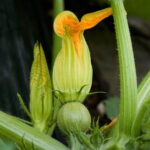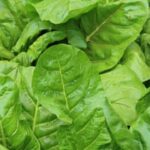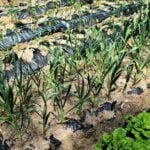Growing vegetables in pots has become increasingly popular due to the numerous benefits it offers. In this article, we will explore why many gardeners are opting for pots over traditional garden beds for their vegetable gardens. The rise of container gardening has revolutionized the way we grow our own food, providing a viable solution for those with limited space or unfavorable soil conditions. By using pots, you can enjoy all the rewards of homegrown produce while overcoming common gardening challenges.
Container gardening offers several advantages that make it an appealing choice for vegetable enthusiasts. Firstly, growing vegetables in pots allows for better control over environmental factors such as sunlight exposure and soil quality. This flexibility ensures that your plants receive the ideal conditions they need to thrive. Additionally, pots provide mobility, making it easier to transport and reposition your plants as needed.
The trend towards using pots for vegetable gardens is also driven by the increasing popularity of urban gardening and the desire to utilize small spaces effectively. With urban living on the rise, cultivating a traditional garden bed may not be feasible for many individuals. However, by utilizing containers, you can create a functional and productive vegetable garden even in the smallest of spaces – from balconies and patios to rooftops and windowsills.
In this article, we will guide you through everything you need to know about finding the best pots for your vegetable garden. We will discuss essential factors to consider when choosing pots, such as size, material options like clay and plastic with their respective advantages and drawbacks, as well as drainage and water retention capabilities.
Furthermore, we will present curated lists of top recommendations based on these considerations – featuring clay pots ideal for natural heat distribution, plastic pots known for their durability, and fabric grow bags lauded for their breathability.
Whether you are new to container gardening or looking to expand your existing vegetable garden by incorporating more pots, this article will equip you with valuable knowledge and inspire you with innovative ideas. Making an informed decision about the pots you choose is essential for ensuring the success and productivity of your vegetable plants. So let’s dive in and discover the best pots for your individual gardening needs.
Factors to Consider When Choosing Pots for Vegetable Gardens
When it comes to choosing pots for vegetable gardens, there are several important factors to consider. These factors will help determine the size, material, and drainage capabilities of the pots, ensuring that your vegetables have the best environment to thrive in.
Firstly, it is crucial to consider the size and depth of pots for specific vegetable types. Different vegetables have different root systems and space requirements. Larger plants such as tomatoes or peppers will need deeper pots to accommodate their extensive root systems, while smaller plants like herbs can do well in shallower pots. It is important to research the optimal pot size for each vegetable you plan to grow and choose accordingly.
The material of the pots also plays a significant role in their suitability for vegetable gardening. Common options include clay, plastic, ceramic, and more. Each material has its own advantages and disadvantages. For example, clay pots are known for their excellent drainage capabilities, while plastic pots tend to be more lightweight and durable. Consider your specific needs and preferences when deciding on the material of your pots.
In addition to size and material, proper drainage and water retention capabilities are essential for healthy plant growth. Good drainage ensures that excess water can escape from the pot easily, preventing waterlogging which can lead to root rot.
On the other hand, some vegetables may benefit from a slightly higher moisture level in the soil. It is important to strike a balance by choosing pots with drainage holes or materials that promote adequate airflow while still retaining enough moisture for your specific vegetable needs.
By taking these factors into consideration when choosing pots for your vegetable garden, you can create an optimal growing environment that supports healthy plant growth and maximizes yields. Whether you opt for clay pots known for their traditional beauty or plastic pots valued for their practicality and durability, selecting the right containers will greatly contribute to the success of your vegetable gardening venture.
Top 5 Best Pots for Vegetable Gardens
Advantages of Clay Pots for Vegetable Gardening
When it comes to choosing the best pots for vegetable gardens, clay pots are often a popular choice among gardeners. Their unique characteristics and advantages make them an ideal option for growing a variety of vegetables. One of the main benefits of clay pots is their porosity, which allows air and moisture to circulate around the plant’s root system.
This promotes healthy growth and reduces the risk of overwatering or root rot. Clay pots also provide insulation to the roots, protecting them from extreme temperature fluctuations. Additionally, clay is a natural material that does not release harmful chemicals into the soil, making it a safe choice for growing vegetables.
Top 5 Clay Pots for Vegetable Gardens
- Terracotta Clay Pots: These traditional clay pots are highly sought after for their aesthetic appeal and excellent ventilation properties. Available in various sizes, terracotta clay pots allow excess moisture to evaporate through their porous walls, preventing waterlogging and promoting optimal root health.
- Olla Pottery Planters: Olla pottery planters are unique clay pots designed with a small opening at the top and a wider base that gradually tapers towards the bottom. The design helps conserve water by slowly releasing it directly to the roots as needed, minimizing waste and ensuring efficient hydration.
- Unglazed Ceramic Pots: Unglazed ceramic pots provide good insulation while allowing excess moisture to evaporate through their porous surface. They come in different shapes and sizes, allowing you to find the perfect fit for your vegetable garden.
- Classic Red Clay Pots: These timeless clay pots are known for their durability and excellent drainage capabilities. Their rustic charm adds character to any vegetable garden while providing optimal conditions for healthy plant growth.
- Terra Cotta Strawberry Jars: Designed specifically for growing strawberries, terra cotta strawberry jars have multiple planting pockets stacked vertically, allowing you to maximize your growing space. The porous nature of the clay helps regulate moisture levels and provides excellent air circulation.
When choosing clay pots for your vegetable garden, consider the size of the plants you intend to grow and ensure that the pot provides enough depth for their root systems. Additionally, it is crucial to check if the clay pot has adequate drainage holes to prevent waterlogging. With these factors in mind, you can confidently select the best clay pots that suit your vegetable gardening needs.
Top 5 Best Pots for Vegetable Gardens
Plastic pots are a popular choice for vegetable gardens due to their affordability, durability, and versatility. When selecting plastic pots for your vegetable garden, there are several factors to consider.
Firstly, size is an important consideration. Different vegetable plants require varying amounts of space for their root systems to grow and develop. It is essential to choose pots that are large enough to accommodate the full growth potential of your vegetables. This will ensure that they have enough room for their roots to spread out and access necessary nutrients.
Another factor to consider is the material of the plastic pots. There are different types of plastic available, each with its own pros and cons. One common type is polypropylene, which is lightweight and has good temperature insulation properties. Another option is high-density polyethylene, which is more rigid and durable. It is important to select pots made from materials that are BPA-free and food-safe.
Drainage capabilities are crucial when it comes to growing vegetables in plastic pots. Good drainage prevents waterlogging, which can lead to root rot and other diseases. Look for plastic pots with drainage holes at the bottom or those that come with saucers to collect excess water. Additionally, consider using potting soil mixes specifically designed for container gardening as they provide optimal drainage while retaining moisture.
Now let’s explore the top 5 best plastic pots recommended for growing vegetables:
- ot Name>: This plastic pot features a sturdy construction with thick walls that provide excellent insulation against extreme temperatures. It comes in various sizes, making it suitable for different types of vegetables.
- ot Name>: Made from high-density polyethylene, this pot boasts exceptional durability and resistance to cracking or breaking. It has a self-watering system that helps maintain consistent moisture levels in the soil.
- 3.ot Name>: These lightweight plastic pots are great for small spaces or balcony gardens. They have a modern design and come in vibrant colors that add a pop of visual appeal to your vegetable garden.
- ot Name>: These plastic pots are stackable, making them ideal for vertical gardening or when space is limited. They have a unique drainage system that allows excess water to be collected at the bottom for later use.
- ot Name>: Designed specifically for hanging gardens, these plastic pots are equipped with sturdy hooks and adjustable ropes. They have a built-in reservoir that ensures consistent watering even in hot weather.
By considering the size, material, and drainage capabilities of plastic pots, as well as exploring the top 5 options available on the market, you can make an informed decision that suits your vegetable garden’s needs and preferences. Plastic pots offer an affordable and practical solution for growing vegetables in containers.
Top 5 Best Pots for Vegetable Gardens
Fabric grow bags have gained immense popularity among vegetable gardeners due to their numerous advantages. These bags are made from durable and breathable fabric, allowing for excellent aeration, root development, and moisture control. They are also lightweight and portable, making them ideal for gardeners with limited space or those who want the flexibility of moving their plants around.
When choosing fabric grow bags for your vegetable garden, there are several top options available on the market. Here is a curated list of the top 5 fabric grow bags renowned for their breathability, portability, and sustainable properties:
Smart Pots Fabric Containers
Smart Pots are well-known for their high-quality fabric containers that provide optimal root zone conditions. With various sizes ranging from small to extra-large, these bags offer ample space for different vegetable types. The porous fabric promotes air pruning, preventing root circling and enhancing nutrient absorption.
Vivosun Grow Bags
Vivosun offers a range of affordable fabric grow bags suitable for all skill levels of gardeners. These bags feature sturdy handles for easy transportation and come in multiple sizes to accommodate various plant species. The thick non-woven fabric material provides excellent drainage while retaining moisture.
Root Pouch Grow Bags
Root Pouch is a trusted brand known for its eco-friendly fabric grow bags made from recycled PET bottles. These bags have a unique cone shape that encourages vertical root growth and prevents root binding. They also come with pre-cut handles for effortless maneuvering.
Garden4Ever Grow Bags
Garden4Ever’s fabric grow bags are constructed with high-quality breathable material that ensures proper drainage and prevents overwatering. Available in different colors, sizes, and shapes, they offer versatility in styling your vegetable garden.
Budget Bagz Fabric Pots
Budget Bagz provides cost-effective fabric grow bags without compromising quality. These reusable pots are made from sturdy fabric and have reinforced handles for easy lifting. They are available in various sizes to suit different vegetable plants.
When choosing fabric grow bags, it is essential to consider the size, durability, and drainage capabilities that align with your specific vegetable gardening needs. Additionally, ensure proper maintenance by cleaning the bags regularly to prevent diseases and prolong their lifespan. With these top 5 options, you can confidently choose fabric grow bags that will contribute to the success of your vegetable garden.
Best Pots for Small Spaces
In today’s fast-paced urban environment, many people have limited outdoor space for traditional vegetable gardens. However, that should not deter them from enjoying the benefits of growing their own vegetables. One solution to this challenge is utilizing hanging and vertical pots specifically designed for small spaces. These innovative gardening solutions not only maximize space efficiency but also add a touch of greenery to balconies, patios, or even indoor areas.
Significance of Hanging and Vertical Pots
Hanging and vertical pots are particularly valuable in small spaces where square footage is limited. By utilizing the vertical dimension, these pots allow gardeners to grow a wide variety of vegetables without taking up precious ground space. They can be suspended from railings, hooks, or overhead structures, making use of previously unused areas.
Furthermore, hanging and vertical pots provide additional benefits beyond space optimization. They elevate plants off the ground, minimizing the risk of pests and diseases that may otherwise affect plants in traditional beds. Additionally, they bring a visually appealing element to any environment by adding layers and depth to the overall design.
Best Pots for Small Spaces
When it comes to choosing the best hanging and vertical pots for small spaces, there are various options available on the market. Hanging baskets are ideal for suspending flowering vines such as cherry tomatoes or cascading herbs like trailing thyme or mint.
Wall-mounted planters offer flexibility in terms of configuration and can be easily attached to fences or walls. Vertical gardens provide a unique opportunity to create stunning living walls with multiple tiers of planting pockets where leafy greens like lettuce and spinach thrive.
It’s important to consider factors such as material durability, ease of installation, water drainage capabilities, and overall aesthetics when selecting hanging and vertical pots for small spaces. By prioritizing these aspects along with plant compatibility (root depth requirements), gardeners can choose pots that seamlessly fit into their individual circumstances while creating an abundant and functional vegetable garden within a confined environment.
DIY Options
Many gardeners enjoy the creative aspect of gardening and prefer to personalize their vegetable gardens with unique and handmade pots. Creating custom pots for vegetable gardens can be a fun and cost-effective way to add a personal touch to your garden while embracing sustainability and repurposing household items. In this section, we will explore some DIY options for creating custom pots for your vegetable garden.
One popular option for creating custom pots is repurposing old containers. Items such as buckets, baskets, and wooden crates can be easily transformed into functional planters. By drilling drainage holes at the bottom of these containers and adding a layer of gravel or stones for proper drainage, you can create an ideal environment for your vegetable plants.
Another creative idea is to upcycle old tires into pots. Tires provide a durable and weather-resistant material that can withstand outdoor conditions. By painting the tires with non-toxic paint, you can add a splash of color to your garden while reducing waste.
If you want to add a touch of whimsy to your vegetable garden, consider using old boots or shoes as planters. This unique approach not only adds visual interest but also creates an opportunity to repurpose footwear that has reached the end of its life span.
When creating custom pots for vegetable gardens, it’s important to consider the specific needs of your plants. Ensure that each DIY pot has adequate drainage by drilling or puncturing holes in the bottom. Additionally, choose appropriate sizes that accommodate the root system and growth potential of your vegetables.
| DIY Pot Option | Description |
|---|---|
| Repurposed Containers | This option involves repurposing old containers such as buckets, baskets, or wooden crates into planters. |
| Upcycled Tires | Tires can be painted and transformed into durable and weather-resistant planters. |
| Old Boots or Shoes | Transforming old footwear into whimsical planters adds visual interest to the vegetable garden. |
Expert Tips for Maintaining Healthy Vegetable Plants in Pots
Maintaining healthy vegetable plants in pots requires attention to several crucial factors. Here are some expert tips to help you ensure the optimal growth and vitality of your potted vegetable garden.
- Potting Soil Selection: Choosing the right potting soil is essential for healthy plant growth. Opt for a high-quality mix specifically formulated for container gardening. Look for soil that provides adequate drainage while retaining moisture, as well as a balanced nutrient profile.
- Watering Techniques: Proper watering is key to preventing both under – and over-watering of your plants. Check the moisture level regularly by inserting your finger about an inch into the soil. If it feels dry, it’s time to water. Ensure that water reaches the roots by watering thoroughly until it begins to drain from the bottom of the pot.
- Nutrient Supply: Unlike plants in traditional gardens, potted plants rely on you for their entire nutrient supply. Consider using organic fertilizers or slow-release granules specifically formulated for container gardening to provide a consistent source of nutrients throughout the growing season.
- Pest Control: Potted vegetables are not immune to pests and diseases. Implement preventative measures such as regularly inspecting plants for signs of damage or infestation, using organic pest control methods like neem oil or insecticidal soaps, and implementing companion planting strategies to repel common garden pests.
- Sun Exposure: Most vegetables require at least 6 hours of direct sunlight each day for optimal growth and productivity. Place your pots in locations with adequate sunlight exposure or use techniques like rotating pots during the day to ensure all sides receive sufficient light.
By following these expert tips, you can maintain healthy vegetable plants in pots and reap a bountiful harvest. Remember to adjust these guidelines based on individual plant requirements and environmental conditions specific to your gardening location. With proper care, your potted vegetable garden can thrive and provide you with delicious homegrown produce all season long.
Conclusion
In conclusion, choosing the best pots for your vegetable garden is crucial in ensuring the success and productivity of your plants. Throughout this article, we have explored various factors to consider when selecting pots, including size, material options, drainage capabilities, and water retention. We have also analyzed the top 5 clay pots, plastic pots, fabric grow bags, as well as the best options for small spaces and DIY alternatives.
By considering these factors and reviewing the recommended pots in each category, you can make an informed decision that aligns with your unique gardening goals and circumstances. Whether you have limited space or prefer a more traditional approach with clay pots or want the convenience of fabric grow bags or hanging baskets, there is a pot out there that suits your needs.
Remember to prioritize appropriate potting soil selection and nutrition for your vegetable plants. Proper watering techniques, pest control measures, and sun exposure recommendations are also essential for maintaining healthy vegetation in containers. By following expert tips and diligently caring for your plants, your vegetable garden will thrive regardless of the type of pot you choose.

If you’re looking to get into vegetable gardening, or are just looking for some tips on how to make your current garden better, then you’ve come to the right place! My name is Ethel and I have been gardening for years. In this blog, I’m going to share with you some of my best tips on how to create a successful vegetable garden.





